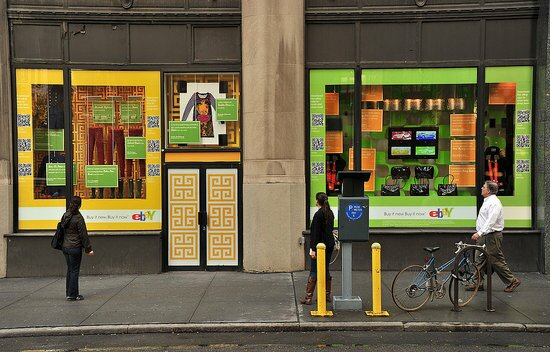Webinar recap: Shopping without borders
February 12, 2013 1 Comment
If there’s one theme that emerged from last week’s webinar on trends for 2013, it’s that this year will see shopping escape the confines of the eCommerce site.
MarketLive founder Ken Burke explained how often-discussed but rarely-implemented concepts such as social commerce and multi-channel execution are due to come to fruition, resulting in an experience where shopping seamlessly blends with a consumer’s individual lifestyle. Rather than having to seek out products nested within eCommerce site categories, shoppers will be able to access items in new formats, presented with their individual devices, locations and situations in mind.
Finding new ways to marry shoppers’ preferences with products is an essential means of brand differentiation, which — as discussed in our preview of the webinar – will be merchants’ core challenge for 2013. By attuning technology to match shoppers’ priorities and the core identity of their brands, merchants can stand out in the crowd. A few top strategies the webinar covered:
Designing tablet-specific experiences. Burke estimated that 25% of all online shopping now takes place on tablets — and there’s growing evidence that tablet shoppers are more likely to buy, and buy more, than mobile and perhaps even desktop shoppers. So it behooves merchants to take advantage of the devices’s unique properties — not only its screen size and swipe-and-tap navigation, but the environment in which shoppers use tablets. Tablet owners use them at home 74% of the time, according to eMarketer, while just over a third use them in stores. By contrast, the vast majority of smartphone owners go online on their devices from on-the-go locations, with 75% using them in stores, industry researcher Forrester found. Merchants should optimize the shopping experience for tablets with display-driven formats that enable swiping to browse, as Staples has done with a tablet-specific site that includes an array of “hot deals” and best sellers for shoppers to swipe through.
Connecting on-the-go browsing to buying. Smartphone shoppers are 14% more likely to convert and make a purchase in the store than non-smartphone users, according to data from Deloitte — the trick is to provide deep, location-relevant content that encourages purchasing. As a corollary benefit, developing mobile content intended for in-store use helps merchants quantify and track consumers’ movement across touchpoints – enabling them to tighten the mobile-to-purchase connection and justify further investment in mobile efforts. QR codes are increasingly prevalent, with one in five U.S. consumers having scanned one in the past month, so merchants would do well to experiment with this format for physical stores. As an extreme example, Burke showed how eBay has transformed its Inspiration Shop window at 404 Park Avenue South in New York into a buying opportunity using QR codes to link passersby to products and transactions.
Embedding products in pictures. Merchants have long known that multiple images and product videos help increase conversion; now, it’s possible to make the transition from image to transaction even more seamless, with product links and displays built into rich media that can be syndicated far beyond the eCommerce site. Barney’s New York used a behind-the-scenes video to showcase products with a product popup display that allowed shoppers to add items to the cart without disrupting their viewing experience. A timeline across the bottom of the display lets shoppers scroll back to items of interest.
Redefining social shopping. At first, merchants who wanted to monetize social media focused on Facebook stores as a way to enable shoppers to buy within the social environment. Those efforts have seen mixed success, largely because merely adding a “buy” button fails to take advantage of the unique properties of the medium. Rather, by integrating social data with products merchants can create an engaging experience for brand followers. On social networks, that means building interactive social media experiences that allow shoppers to share and tailor product arrays. But perhaps even more exciting is the prospect of bringing social data back onto the eCommerce site, where merchants can blend shoppers’ personal preferences and social data with relevant products using Facebook login and other social connector tools. When shoppers use Facebook in conjunction with accessory retailer Claire’s, they can access a “Fashion Feed” showing which items other shoppers — everyone or just friends — are tagging as favorites, and they can opt whether to add their product picks to the mix.
Using social login is so important that we’re planning a post dedicated to best practices for implementation — watch for it in the coming week. Meantime, to access more key strategies for 2013, replay the webinar — and tell us: what are your priorities for the year?



Pingback: Social media watch: 5 Ways to Use Twitter’s Vine app « Mobile Commerce « MarketLive Intelligent Commerce Blog